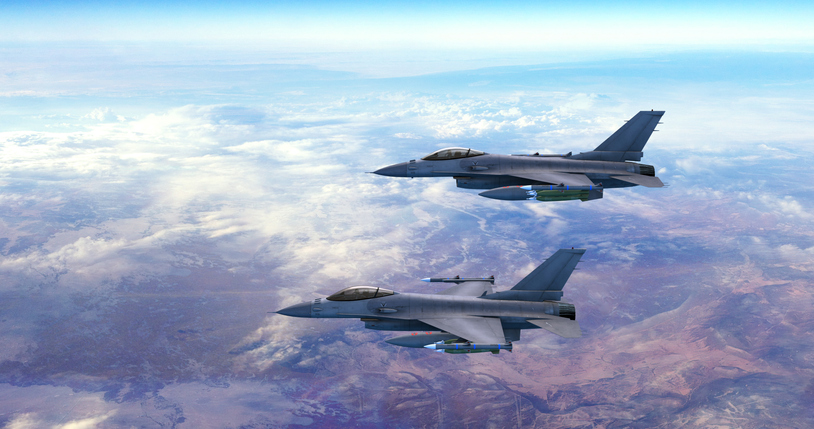In the defense industry, specialized metal components are necessary for high-stakes applications like military vehicles, armor, and weaponry. In such a demanding field, every part is critical — they must be able to withstand harsh conditions and meet exacting standards for durability, precision, and safety, all while living up to the highest performance standards. This is where defense metal fabrication comes in. However, fabricating metal components for defense applications comes with unique challenges. Working with ultra-tough materials and meeting extreme tolerances are only two examples.
Today, let’s explore five of the primary challenges in defense metal fabrication and how advanced machining technologies play a crucial role in overcoming them.
Defense Metal Fabrication Challenge #1: Precision in Complex Assemblies
In defense metal fabrication, the challenge of achieving precision in complex assemblies is paramount. Defense components must meet extremely tight tolerances in order to ensure functionality, reliability, and safety, especially in mission-critical systems. Particularly in high-stakes environments, even the slightest misalignment can disrupt the operation of critical systems, leading to operational failures.
For example, components in targeting systems require flawless integration to ensure accurate performance. Communication equipment housings must also be produced with exacting standards to prevent failures that could compromise mission success.
To achieve this, manufacturers turn to advanced machining technologies. High-precision CNC machines like 5-axis machines offer robust solutions to these challenges. Designed to deliver extremely high levels of precision while maintaining tight tolerances, CNC machines can create components that fit seamlessly into complex assemblies, enhancing overall system reliability.
The result: a higher level of confidence in the performance of critical components used in targeting systems, communication equipment, and other defense applications where reliability is a must.
Defense Fabrication Challenge #2: Complex and Varied Geometries
Another significant challenge in defense metal fabrication is the production of parts with complex and varied geometries. Many defense components demand intricate shapes such as curved surfaces and detailed internal features, all of which add a level of difficulty to the manufacturing process. This complexity can also impact production efficiency and costs.
With conventional manufacturing techniques, manufacturers often face increased production times and higher costs. The need for additional tooling, manual adjustments, and multiple setups can add up fast, and even lead to delays .
But with advanced machining technologies (especially multi-axis CNC machining), manufacturers can deliver the efficient production of parts with these intricate details and complex shapes, allowing for greater design freedom without sacrificing accuracy.
Take firearm receivers and vehicle mounts, for instance. Both of these applications often feature sophisticated geometries that can be produced much more efficiently through precision machining. Not only does this streamline the manufacturing process, but it also ensures that the final components meet all the strict requirements of the industry.
Challenge #3: Tough Materials for Durability and Protection
Understandably, defense sector applications typically require high-strength materials like steels and titanium to ensure maximum durability and protection in extreme environments. However, the toughness of these materials also makes them harder to work with during the defense metal fabrication process.
One specific challenge presented by these materials is rapid tool wear, which both compromises the quality of the machined components and the efficiency of the production. As tools degrade, manufacturers may face increased delays for tool repair and changes, which often leads to higher manufacturing costs. The complexities involved in machining these materials can also result in inconsistencies in the final product.
To meet this challenge, manufacturers implement advanced machining techniques and specialized tooling to handle the burden of working with these tough materials while maintaining part quality and production speed. For instance, in the production of armor plating and protective structures, advanced machining helps ensure accurate cuts and durable parts without subjection tools to excessive wear. By doing this, manufacturers can enhance efficiency and ensure that finished components meet the highest standards for performance and protection.
Defense Fabrication Challenge #4: Surface Finish and Corrosion Resistance
The quality of a component’s surface finish is an easy detail to overlook, but it’s critical for ensuring the longevity and reliability of parts in the defense industry. Many defense components require a high-quality surface finish to enhance aesthetics, reduce fatigue, and improve corrosion resistance. This is especially important for parts exposed to harsh environmental conditions, where surface imperfections can cause premature wear, corrosion, and even compromised structural integrity.
As a result, achieving the right surface quality is essential for performance; even minor flaws can affect a component’s lifespan and functionality. Consider parts like firearm barrels and vehicle frames. In both of these cases, metal parts must maintain a smooth surface to ensure optimal performance and safety. Any imperfections can lead to issues like inaccuracy in firearms and reduced structural integrity in armored vehicles.
Advanced machining in defense metal fabrication once again provides effective solutions to these challenges. Techniques like precision grinding and polishing enable manufacturers to achieve smooth surface finishes, even when working with tough materials. By employing these advanced techniques, defense manufacturers can ensure that their components meet the rigorous standards required for performance and reliability in the field
Challenge #5: High Volume Production with Consistent Quality
Finally, defense metal fabrication must be able to produce components in high volumes while maintaining consistent quality. With the rise of mission-critical components, high production rates are increasingly in demand. However, achieving the balance between volume and consistency can drive up costs and extend lead times, which poses further challenges for timely delivery and budget management.
Advanced machining technologies, like CNC machining and automation, allows for unrivaled repeatability for the production of components that meet rigorous standards. Think components like fasteners or structural brackets for military vehicles; the failure of these can be catastrophic. Through advanced machining and process optimization, manufacturers can enhance efficiency and achieve high production rates without sacrificing quality.
Overcome Defense Manufacturing Challenges with Expertise from Advantage Metal Products
As the defense industry continues to evolve, the demand for high-performance metal fabrication grows alongside it. Each of the challenges identified — precision in complex assemblies, intricate geometries, tough materials, surface finish, and high-volume production — underscores the critical need for advanced machining solutions. By addressing these challenges, manufacturers can ensure that their components meet stringent quality standards and perform reliably in mission-critical applications.
At Advantage Metal Products, we’re an ITAR-registered manufacturer that specializes in precision metal fabrication and machining tailored to the needs of the defense industry. Our state-of-the-art facilities and commitment to quality allow us to tackle these challenges head-on, ensuring that we deliver components that are not only functional but also exceed industry standards for safety and reliability.
If you’re looking for a manufacturing partner who understands the complexities of defense metal fabrication and can provide innovative solutions, contact us today.



